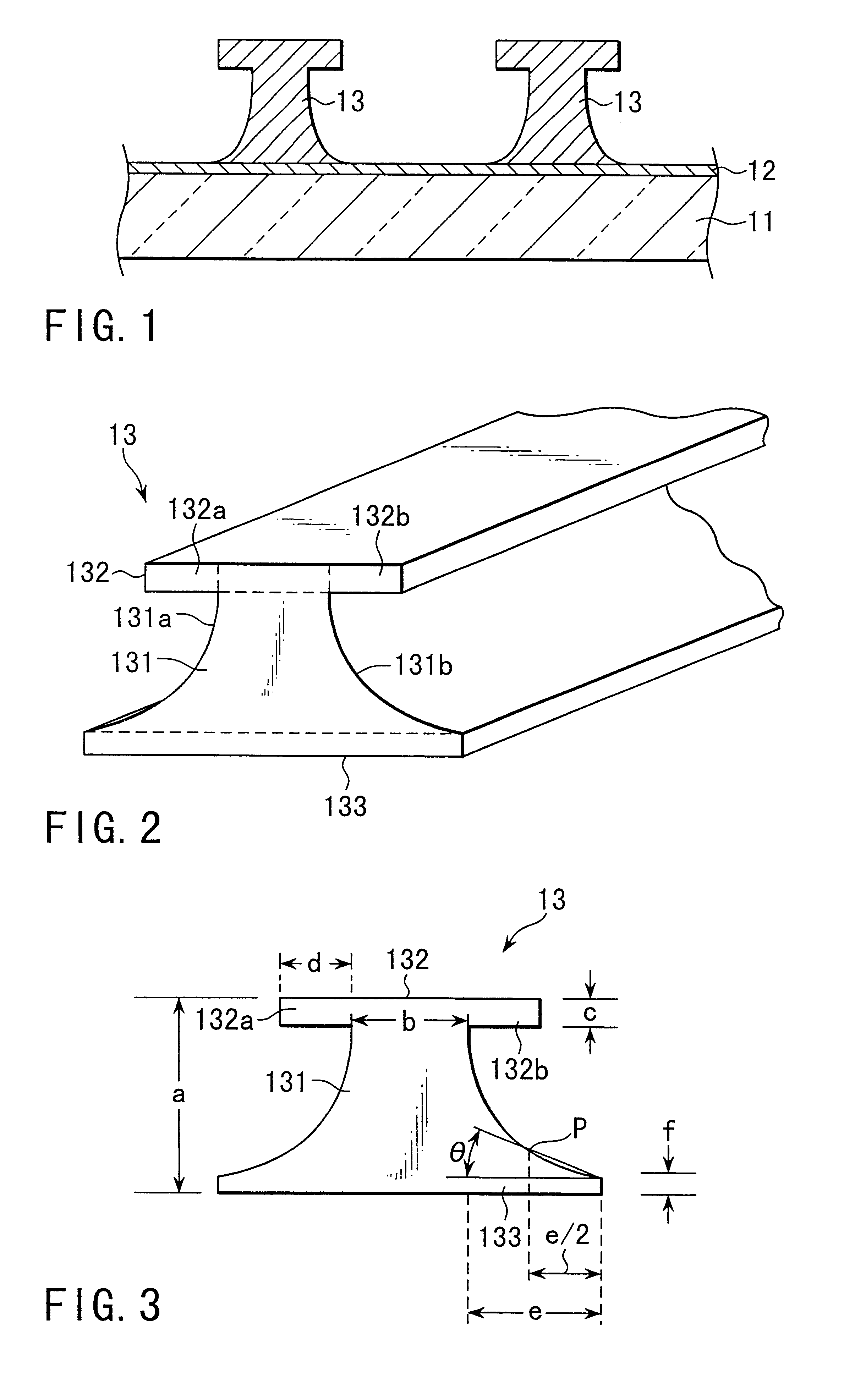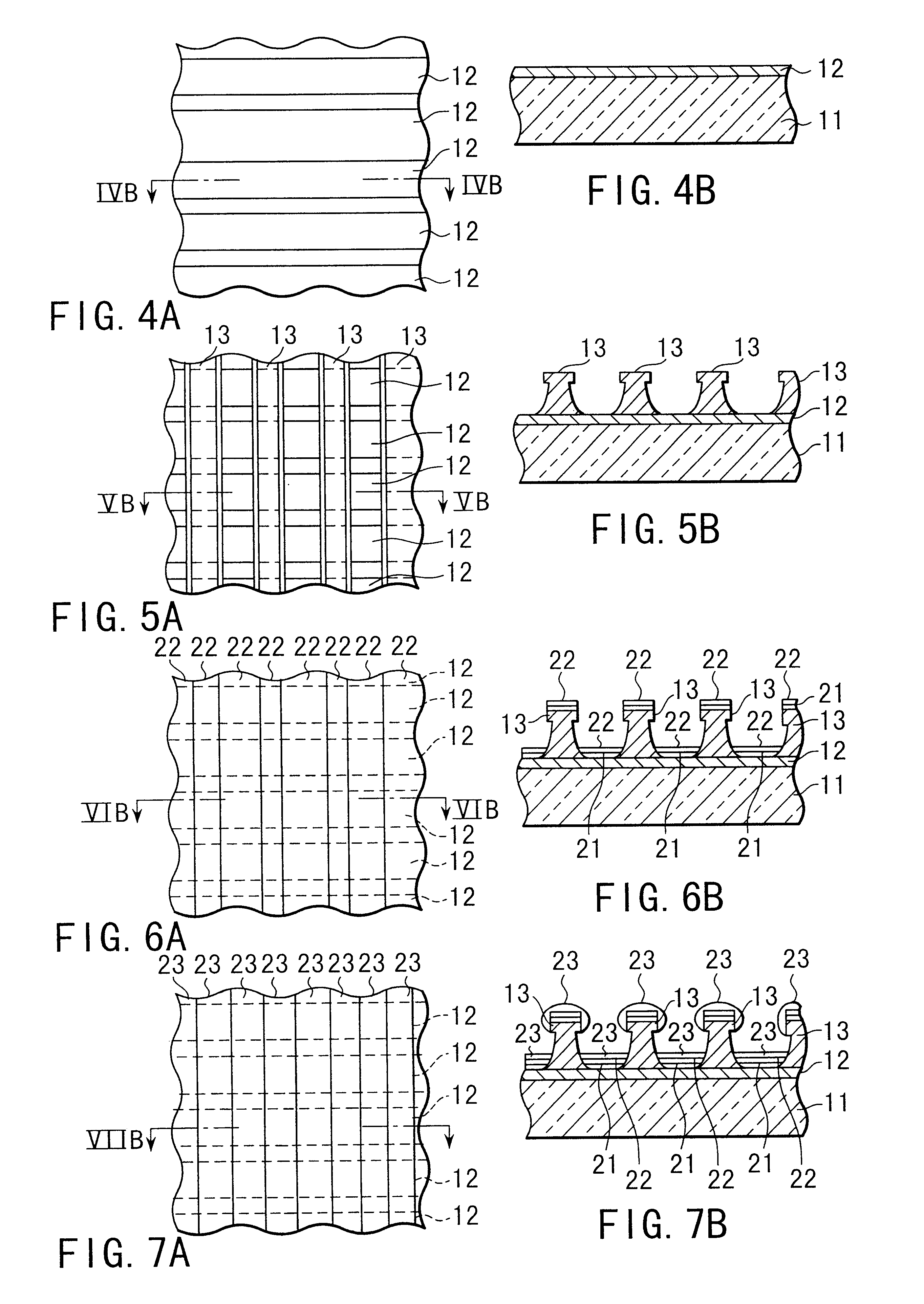Circuit board for organic electroluminescent panel, method of manufacture, and electroluminescent panel
a technology of electroluminescent panels and circuit boards, which is applied in the manufacture of electrode systems, electric discharge tubes/lamps, and discharge tubes luminescent screens, etc., can solve the problems of difficult control uniform directions, difficult to carry out vapor deposition while rotating the substrate, and limited linear anode patterns
- Summary
- Abstract
- Description
- Claims
- Application Information
AI Technical Summary
Benefits of technology
Problems solved by technology
Method used
Image
Examples
third embodiment
A substrate for an organic EL display element according to the present invention will now be described with reference to FIG. 25.
As shown in FIG. 25, a plurality of striped first electrode lines 12 (anode lines in this embodiment) are formed on a support 11 made of a light-transmitting insulating material such as quartz, glass or a plastic material, preferably a transparent material. Further, it is desirable to form a plurality of striped auxiliary electrode lines 91 in a region between an edge of the support and a region surrounding the first electrode lines. These auxiliary electrode lines 91 are formed apart from the first electrode lines 12 in a manner to extend from within a region surrounded by a frame 92 described later to the outside of the frame 92. Naturally, the auxiliary electrode lines 91 cross the frame 92 and can be used as electrodes that are connected to second electrode lines described later. FIG. 25 shows that the first electrode lines 12 are arranged a predetermi...
example 1
A substrate for an organic EL display element and an organic EL display element were prepared in this Example by the methods described previously in conjunction with FIGS. 4A to 7B.
In the first step, an ITO layer for the first electrode line was formed on a glass support 11 by means of sputtering. Then, for improving both the transparency and electrical conductivity of the first electrode line, a heat treatment was applied to the ITO layer within an air atmosphere so as to crystallize the ITO layer.
Then the ITO layer was patterned by photolithography and wet etching so as to form the first electrode line 12 (see FIGS. 4A and 4B).
In the next step, the support 11 having the first electrode line 12 formed thereon was coated with a negative photosensitive resin having fine graphite particles acting as a black coloring matter dispersed therein, followed by pre-baking, exposing to light, developing, and post-baking the photosensitive resin layer to form partition walls 13 each having eave...
example 2
A substrate for an organic EL display element and an organic EL display element were prepared as in Example 1, except that a triazine-based organic UV-absorbing substance was used in place of the fine black graphite particles. FIG. 28 is an SEM photo showing the partition wall of the substrate for the display element thus prepared. The display element was found to be substantially equal in performance to the element prepared in Example 1.
PUM
 Login to View More
Login to View More Abstract
Description
Claims
Application Information
 Login to View More
Login to View More - R&D
- Intellectual Property
- Life Sciences
- Materials
- Tech Scout
- Unparalleled Data Quality
- Higher Quality Content
- 60% Fewer Hallucinations
Browse by: Latest US Patents, China's latest patents, Technical Efficacy Thesaurus, Application Domain, Technology Topic, Popular Technical Reports.
© 2025 PatSnap. All rights reserved.Legal|Privacy policy|Modern Slavery Act Transparency Statement|Sitemap|About US| Contact US: help@patsnap.com



